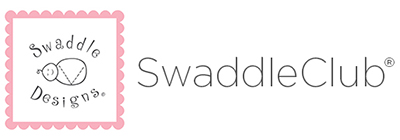

Safe Sleep
SwaddleDesigns Safe Sleep Program strives to educate new parents and caregivers using the most recent information and research to increase awareness of Safe Sleep practices and help parents reduce risk of SIDS.
Always place baby on his or her back for sleep - for nighttime sleep and nap time sleep. The back sleeping position reduces risk of SIDS.
Baby should sleep on a firm sleep surface, in a bassinet, cradle or crib near the mother’s bed, without any soft toys, pillows or loose bedding. The Consumer Product Safety Commission recommends a fitted sheet on the baby’s mattress. Babies should not be placed for sleep on water beds, quilts, pillows, sheepskins, or other fluffy surfaces.
No soft objects and loose bedding in baby’s bed during sleeptime. The AAP recommends no stuffed animals, no sheepskin, no quilts, no positioners, no pillows, and no bumpers at all.
Always keep baby’s environment smoke-free by not smoking when pregnant, near your baby, or in an area where your baby spends time or sleeps. Maternal smoking during pregnancy has emerged as a major risk factor in almost every epidemiologic study of SIDS.
Be sure that air can circulate freely around baby’s face. A small fan in baby’s room can increase ventilation, but should not blow air directly on baby.
Sucking is the most organizing behavior of the newborn - it helps baby with sleep/wake control. Infant researchers recommend parents to swaddle baby with hands within reach of mouth, so baby can suck on his or her fingers to self-soothe.
Consider using a pacifier at sleep time once breastfeeding is established. A pacifier should not be reinserted if it falls out and baby is asleep.
Electrical cords from video monitors, camera and window treatments should be kept a minimum of 3 feet from baby’s crib and secured out of child’s reach. Cords are a strangulation hazard.
Breastfeeding is encouraged. Breastfeed, if you can.
Allow time for tummy time when baby is awake and supervised. Place baby on tummy during play time.
The AAP discourages use of positioning devices.
It is an important responsibility of the caregiver to dress baby appropriately for sleep based on the temperature of their environment. Parents should not overdress or underdress baby.
As a general guide, the American Academy of Pediatrics recommends dressing baby in no more than one layer more than an adult would use to be comfortable in the same environment. Baby’s head should be uncovered.
Baby should not be too hot or too cold, but just right ~ comfortably warm.
For many years it was considered okay if baby’s hands and feet were cool. The belief was the coolness was due to baby’s immature circulatory system. However, recently, the World Health Organization states that baby’s hands and feet should be pink and warm. Warm and pink feet of the baby indicate that the baby is in thermal comfort. But when feet are cold and trunk is warm it indicates that the baby is in cold stress. In hypothermia both feet and trunk are cold to touch.
Babies are not good at regulating their own temperatures. No blanket can naturally regulate baby’s temperature for them, so parents need to touch and feel their baby to ensure baby is not too hot or too cold.
Do not overbundle a sick or feverish baby. Do not overheat or overcool the baby’s room.
Most medical experts recommend a sleep environment of 65-72°F (18-22°C)
Many pediatricians recommend swaddling baby for sleep time during the first three months. Until approximately 3 months of age, babies have the Moro or startle reflex which causes them to flail their arms and legs, and wake themselves up. Swaddling helps reduce awakenings caused by the startle reflex.
Research has proven that babies sleep better on their back when swaddled and swaddling may help keep babies on their backs. Researchers have concluded that when baby sleeps better on his or her back, then parents and caregivers are less likely to place baby in the dangerous tummy position.
The startle reflex usually disappears when baby is around three months old. This age is a good time to transition baby from swaddling. The easiest way to transition baby from Swaddle to Sack is to use our Transitional Swaddle Sack.®.
Please share these Safe Sleep Guidelines with all caregivers who may be assisting you and may be putting your baby to sleep.
The information contained on this website is intended to complement, not substitute for, the advice of your child’s pediatrician. Consult with your own pediatrician who can discuss your individual needs and counsel you.

At SwaddleDesigns we are focused on helping parents with up-to-date information and resources that helps parents comfort and care for their baby.
Copyright 2014-2015 SwaddleDesigns, LLC. All rights reserved.
Terms and Conditions | Privacy Policy